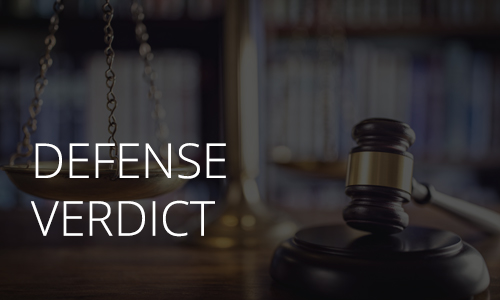Our Claims and Legal team secured a medical malpractice defense verdict on behalf of an anesthesiologist in a case involving an allegation of injury to the long thoracic nerve and serratus anterior muscle of a 65-year old left-hand dominant male. It was alleged that a supraclavicular nerve block performed by our defendant anesthesiologist was the cause of the patient’s injury.
The allegation period began when the plaintiff sustained an injury while at work when a piece of metal became embedded in the plaintiff’s left index finger. As a result of the injury, the patient sought care from a hand surgeon. On the day of surgery, our defendant-anesthesiologist performed a supraclavicular nerve block with Lidocaine under ultrasonic guidance to anesthetize the patient so that a hand surgeon could remove the foreign body and perform a tendon repair.
There were no noted complications encountered during the procedure. A few weeks after the surgery, the plaintiff returned to the surgical center looking to speak with another anesthesiologist about the nerve block. The plaintiff complained of pain in the ulnar nerve distribution of his left arm as well as posterior shoulder pain in the scapular region.
A non-party anesthesiologist documented the plaintiff’s inability to fully extend his arm above his head and suggested x-rays. Six months later, the patient had an electromyogram & nerve conduction study and was diagnosed with mild left carpal tunnel syndrome, chronic left long thoracic nerve neuropathy, and left shoulder scapular winging. The patient sued our anesthesiologist, alleging that the nerve block was improperly performed causing left arm and shoulder disability.
At trial, the plaintiff’s counsel tried to show that the defendant-anesthesiologist inserted the block needle in a manner which injured the brachial plexus, that this type of block was not necessary, and that the patient was not offered alternatives to the supraclavicular block.
In response, our defense team was able to show that the procedure was performed well within the standard of care as substantiated by the ultrasound pictures taken at the time of surgery. Our team had an animated simulation with 3D imaging created to show the jury how the block is administered, where the needle goes, and where the long thoracic nerve is in relation to the injection site. Under direct examination by our defense counsel, our experts were able to explain to the jury, based on the factual evidence, that our anesthesiologist was not responsible for the injury which the patient alleged. Following closing arguments, the jury returned a defense verdict on behalf of our anesthesiologist.
